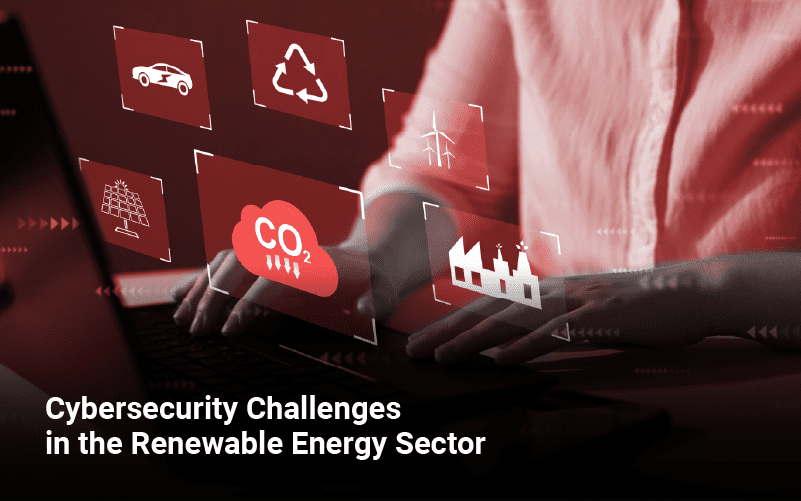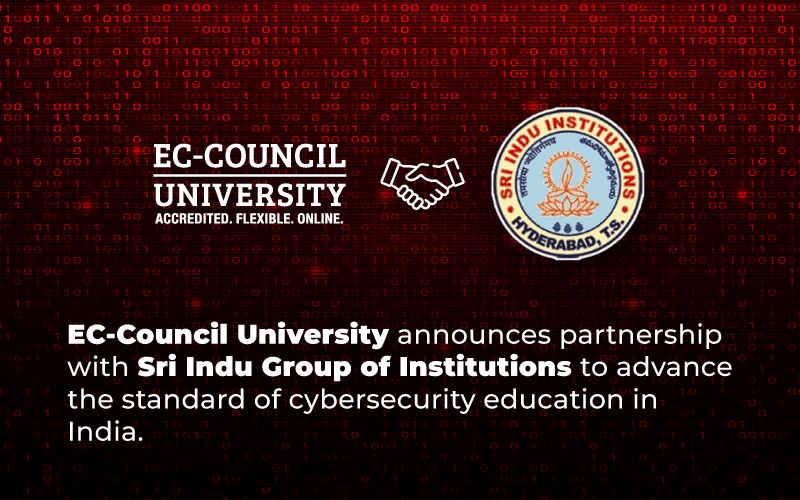The renewable energy industry has experienced significant expansion in recent years, driven by the global push for sustainability and cleaner energy sources. The International Energy Agency projects that renewable electricity capacity will grow by more than 60% in 2026 (IEA, 2024). However, as more energy companies adopt digital technologies to optimize operations, the need to address cybersecurity challenges has become more critical than ever.
The energy sector, including renewable energy, is increasingly becoming a major target for cyberattacks due to its strategic importance and the sensitive nature of the data it handles. A report by Statistica found that the energy sector was the fourth most targeted industry by cybercriminals in 2023 (Statistica. 2024). This blog will examine the cybersecurity challenges confronting the renewable energy industry, focusing specifically on emerging cyber threats, ransomware attacks, and the need for strong security measures in an increasingly interconnected environment.
1. The Digital Transformation of the Energy Industry
The energy sector is facing a digital transformation, incorporating advanced technologies, including the Internet of Things, artificial intelligence, and machine learning. These technologies enable energy companies to optimize energy production, distribution, and consumption. However, as digital systems become more pervasive, they also expand the attack surface for cybercriminals.
The increasing reliance on digital technologies in renewable energy systems makes modern energy infrastructure more susceptible to cyber threats. A growing concern among energy professionals reflects this risk, with 71% acknowledging that their organizations face greater vulnerability to OT cyber incidents than ever before, up from 64% in 2023 (Industrial Cyber. 2025).
For example, wind turbines, solar panels, and smart grids are now equipped with sensors and IoT devices that gather and transmit data to centralized control systems. While this enhances operational efficiency, it also creates new avenues for cyberattacks, as hackers can manipulate vulnerabilities in these devices to obtain unauthorized access to critical systems.
2. Cyber Threats in the Energy Sector
The energy sector, including renewable energy, is increasingly becoming a prime target for cybercriminals. The potential consequences of a cyberattack in this sector can be severe, ranging from financial losses to disruptions in energy supply. Some common cyber threats faced by the energy sector include:
- Phishing Attacks: Attackers use phishing emails to trick employees into exposing sensitive information, including login credentials.
- Malware: Cybercriminals often use malware to disrupt operations, steal data, or gain unauthorized access to control systems.
- Advanced Persistent Threats (APTs): APTs are sophisticated, long-term cyberattacks aimed at infiltrating and monitoring critical infrastructure. In the energy sector, APTs can target control systems, industrial control systems, and operational technology networks, leading to significant operational disruptions.
3. Energy Sector Ransomware Attacks
Ransomware attacks have become a major concern in the energy sector, with numerous incidents reported in recent years. Ransomware attacks occur when hackers encrypt a victim’s data and ask for payment in return for the decryption key.
Ransomware attacks have increasingly targeted the energy sector. One notable example was the Colonial Pipeline attack in 2021, which disrupted fuel supplies across the United States and resulted in a $4.4 million ransom payment.
In the renewable energy sector, ransomware attacks can have far-reaching consequences. An attack on the control systems of a wind farm or solar power plant could lead to power outages, equipment damage, and financial losses. Also, recovery from a ransomware attack can be both time-consuming and expensive, as it frequently demands restoring systems from backups or paying the ransom demand, which may not guarantee the restoration of data.
4. Industrial Control Systems (ICS) Security
Industrial Control Systems (ICS) are essential to the operation of energy infrastructure, including renewable energy sources. ICS are used to monitor and control processes such as power generation, distribution, and consumption. However, these systems are often vulnerable to cyberattacks due to their reliance on legacy technology, lack of proper security measures, and limited segmentation from corporate IT networks.
A significant challenge in securing Industrial Control Systems (ICS) in the energy sector is the complexity and diversity of the systems involved. In 2023, the manufacturing and energy sectors were the most impacted by the Cybersecurity and Infrastructure Security Agency (CISA) Industrial Control Systems advisories, accounting for 44% and 20% of total reported Common Vulnerabilities and Exposures (CVEs), respectively (Industrial Cyber. 2024).
The convergence of IT and OT networks has increased the risk of cyberattacks. While this integration offers operational advantages, it also exposes ICS to cyber threats from the broader corporate network.
5. IoT Security in the Energy Sector
The Internet of Things (IoT) has revolutionized the renewable energy sector, with sensors and connected devices providing real-time data on energy production, consumption, and system performance. However, the increasing use of IoT devices in the energy sector has introduced new cybersecurity risks.
Many IoT devices in the energy sector lack integrated security features, which makes them vulnerable to cybercriminals. Most of the IoT traffic in critical infrastructure environments is unencrypted, leaving systems vulnerable to cyber threats. Hackers can take advantage of vulnerabilities in IoT devices to gain unauthorized access to essential systems, such as power grids or wind farms. Once inside the network, attackers can potentially disrupt operations, steal data, or cause physical damage to equipment.
6. The Need for Comprehensive Cybersecurity Strategies
Given the growing cybersecurity threats in the renewable energy sector, it is essential for energy companies to implement a comprehensive cybersecurity strategy that encompasses both IT and OT networks. This strategy should include:
- Risk Assessment: Consistent risk assessments are mandatory to recognize potential vulnerabilities in energy systems and prioritize security measures accordingly.
- Incident Response Plans: Energy companies should create and consistently test incident response plans to safeguard a swift and effective reaction to cyberattacks.
- Employee Training: Human error is a substantial factor in cybersecurity breaches. Training operatives on cybersecurity best practices, such as recognizing phishing emails and avoiding insecure networks, can help reduce the risk of attacks.
- Collaboration with Government and Industry Groups: The energy sector should collaborate with government agencies, industry associations, and cybersecurity experts to share information on emerging threats and best practices.
The renewable energy sector is vital to the global transition to sustainable energy, but it also faces significant cybersecurity challenges. As digital transformation progresses, the risk of cyber threats disrupting operations and jeopardizing critical infrastructure grows. To tackle these challenges, organizations must invest in robust cybersecurity frameworks, protect industrial control systems, secure IoT devices, and implement comprehensive risk management strategies.
For professionals looking to gain expertise in cybersecurity, EC-Council University offers specialized cybersecurity degree programs that focus on critical aspects of cybersecurity, including securing critical infrastructure like the energy sector. Featuring a curriculum tailored to tackle real-world challenges, EC-Council University prepares students to become industry leaders in cybersecurity. Ensuring the security of the renewable energy sector is not just a technical challenge; it is an imperative for the continued growth and success of the global energy transition.
References:
- International Energy Agency. (2024). Renewables 2021 Analysis and forecast to 2026. https://iea.blob.core.windows.net/assets/5ae32253-7409-4f9a-a91d-1493ffb9777a/Renewables2021-Analysisandforecastto2026.pdf
- Statistica. (Mar 22, 2024). Distribution of cyberattacks across worldwide industries in 2023. https://www.statista.com/statistics/1315805/cyber-attacks-top-industries-worldwide/
- Industrial Cyber. (January 22, 2025). DNV report highlights increased OT cybersecurity investment in energy sector due to escalating threats. https://industrialcyber.co/utilities-energy-power-water-waste/dnv-report-highlights-increased-ot-cybersecurity-investment-in-energy-sector-due-to-escalating-threats/
- Industrial Cyber. (February 15, 2024). New ICS Vulnerabilities report highlights trends and increases in CVEs, despite fewer CISA advisories. https://industrialcyber.co/industrial-cyber-attacks/new-ics-vulnerabilities-report-highlights-trends-and-increases-in-cves-despite-fewer-cisa-advisories/#:~:text=In%202023%2C%20the%20manufacturing%20and,of%20total%20reported%20CVEs%2C%20respectively








